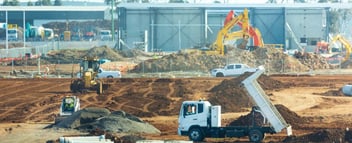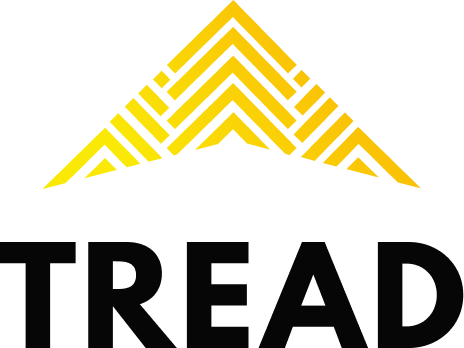Construction fleet management key performance indicators
Tracking Key Performance Indicators is important to understand a business’s health and performance. In construction or trucking industries specifically, choosing the right KPIs to track fleet performance can help you make better, data-driven decisions to improve fleet operations.
But while consistent tracking and reporting are important, it can be difficult to know which KPIs to focus on and which will yield the best results—and ultimately, the highest profits.
This article will outline the 10 construction fleet management KPIs to consider tracking, and how to correctly calculate each one.
Why track fleet KPIs?
Cost efficiency
Reducing costs is the main reason for tracking KPIs and keeping an eye on fleet metrics. When fleet managers have a better understanding of which vehicles are under/over utilized, consistently breaking down, or not properly maintained, they can better optimize vehicle maintenance and vehicle use to increase profitability.
Abnormal vehicle operations
Fuel consumption and vehicle maintenance are two big costs to construction fleets, which can be managed if monitored correctly. By tracking specific KPIs, fleet managers can identify which vehicles are outliers and take action to reduce costs.
Safety
Tracking fleet KPIs can also lead to better driver safety and overall fleet safety. For example, bad driver behavior can lead to safety issues, while neglecting preventive maintenance could lead to unsafe vehicles, such as worn out brakes or tires.
Client relations
An optimized fleet is a more productive fleet, which leads to jobs completed efficiently with no incidents. A job well-done naturally promotes better client relations. The benefit of keeping clients happy and booking more jobs is reason enough alone to consider implementing KPI tracking.
10 construction fleet KPIs to consider tracking
The following are 10 basic construction fleet management KPIs fleet managers can track. These KPIs will help managers further understand their construction business’s financial performance, safety, productivity, and efficiency, as well as identify areas of improvement.
To understand which KPIs are right for your construction fleet, first identify your primary objective (save on costs, maintain vehicles better, promote driver safety etc.). Next, choose two to three KPIs from the list below to track for each objective you identify.
- Unscheduled downtime
- Percentage of preventive maintenance hours
- Percentage of reactive maintenance hours
- Percentage of maintenance overtime hours
- Maintenance cost as a percentage of revenue
- Maintenance cost as a percentage of estimated replacement value
- Financial utilization
- Vehicle utilization
- Fuel economy
- Driver behaviour
1. Unscheduled downtime
When trucks or other machinery experience unscheduled breakdowns or downtime, this can lead to a big loss in company profits. According to a recent study, 82% of fleet companies have experienced unplanned downtime in the past three years, with a single hour of downtime reportedly costing manufacturing companies upward of $100,000.
The construction industry average for unscheduled equipment downtime is about 25-30%, despite most companies aiming to keep this number at 5% or lower. With the leading cause of unscheduled downtime being neglecting preventive maintenance, tracking this KPI and determining the root cause of downtime can lead to a more productive fleet.
How to calculate: total unscheduled downtime hours / total equipment run hours = % unscheduled downtime
2. Percentage of preventive maintenance hours
Preventive maintenance is a key factor to reduce unscheduled downtime for fleets. By spending ample time on preventive maintenance, technicians can detect machinery failure before they happen and service vehicles accordingly. Preventive maintenance can include things like oil and fuel filter changes, replacing hydraulics filters, and other minor repairs. A heavy equipment maintenance checklist will help fleet managers and operators accountable, while extending equipment life expectancy.
This KPI measures how many hours mechanics or service technicians are spending on routine maintenance and reactive maintenance vs. the number of hours spent on preventive maintenance.
Most construction fleet companies aim for up to 85% of maintenance hours spent on preventive maintenance—a benchmark fleet managers should strive for.
How to calculate: hours spent on preventive maintenance / total hours spent on all maintenance = % of hours spent on preventive maintenance.
3. Percentage of reactive maintenance hours
When fleet managers fail to reduce unscheduled downtime and fail to increase preventive maintenance hours, the result is reactive maintenance—repairs made due to machine or vehicle failures. Although tracking unscheduled downtime gives fleet managers insight into where dollars are being lost, tracking the number of hours spent on reactive maintenance can also help give a clearer picture of the true cost of fleet downtime.
It goes without saying—companies should aim for as close to a 0% reactive maintenance rate as possible.
How to calculate: hours spent on reactive maintenance / total hours spent on all maintenance = % of hours spent on reactive maintenance.
4. Percentage of maintenance overtime hours
Mechanics and service technicians are costly and should be used efficiently to reduce overtime hours when possible. The average hourly rate for a heavy duty truck technician can be anywhere from $22-$35. Truck repairs can take anywhere from a few hours to a couple of weeks, depending on the service required.
With overtime hours stacked on top of these costs, mechanic hours can add up quickly. Fleet managers should track the rate of maintenance overtime hours to evaluate technician productivity as well as consider automated scheduling work orders for better efficiency.
A good average to strive for is about 10% or lower in maintenance overtime hours.
How to calculate: mechanic overtime hours / total maintenance hours = % maintenance overtime hours
5. Maintenance cost as a percentage of revenue
Maintenance expenses are inevitable for hauling or construction fleets; however, fleet managers should be tracking whether the total cost of maintenance is in line with revenue and whether these costs make sense according to their utilization.
This will also help businesses better understand how effective their preventive maintenance program is, as well as the quality of maintenance trucks are receiving. For example, a preventive maintenance program that still yields high maintenance costs—which eat into a company’s bottom line—likely needs a refresh.
Typically, trucking companies should aim for 10% or lower in maintenance costs as a percentage of total revenue.
How to calculate: total maintenance costs / total revenue = % maintenance costs
6. Maintenance cost as a percentage of estimated replacement value
Trucks and other heavy equipment are high-value assets for construction companies. Through effective preventive maintenance practices, these assets can last a long time.
However, as vehicles continue to run, maintenance and repair costs eventually become more and more expensive. At a certain point, it will become more cost-effective to replace the equipment than continue repairing it. Understanding the ratio of maintenance cost in relation to the cost of a replacement is a good indicator to determine whether a repair or replacement is in order.
As a rule of thumb, if it will cost less than 50% of the replacement value, the vehicle should be repaired.
How to calculate: total maintenance cost / total cost of replacement = % maintenance cost
7. Financial utilization
Financial utilization or dollar utilization is an indicator which helps fleet managers understand the profitability of each vehicle and quantify the dollar impact of a fleet vehicle. This number takes into account the original, undepreciated cost of the vehicle weighed against the total revenue it brings in from the various jobs it performs.
For example, if a construction fleet is consistently utilizing dump trucks over bulldozers, the financial utilization value of dump trucks will be higher than the bulldozers. This gives fleet managers a clear picture into which vehicles the business should invest more into, and which may need to be retired.
How to calculate: Total job revenue / original cost of vehicle = Financial utilization value
8. Vehicle utilization
Simply put, if vehicles are not in use, they are not making the company any money. It is important for fleet managers to understand the utilization rate of equipment to optimize their fleet for the highest return on investment.
Keep in mind, utilization may mean something different according to each vehicle. For example, a dump truck’s utilization may be based on the number of loads hauled or work orders completed, while a semi-truck’s utilization may be based on miles traveled. This will be up to the fleet manager to determine the specific metrics that should be tracked according to the equipment.
Although it is nearly impossible to achieve a 100% utilization rate, fleet managers should strive to achieve as close to 100% utilization as possible.
How to calculate: vehicle utilization (loads hauled, miles traveled etc.) / total fleet utilization = vehicle utilization rate
9. Fuel economy
According to the American Transport Research Institute, fuel consumption accounts for 24% of total trucking fleet operational costs. Therefore, understanding the fuel efficiency of a fleet’s vehicles can be a powerful way to reduce costs while identifying which specific vehicles negatively affect total revenue.
The main factors which contribute to low fuel economy are the type of vehicle, its condition, and user behavior. This way, fleet managers can identify which vehicles need maintenance or replacement, or even identify poor driver behavior contributing to excess fuel consumption.
How to calculate: total miles driven / total gallons of fuel consumed = fuel economy rate
10. Driver behavior
Construction fleet management KPIs do not only apply to vehicles—monitoring driver behavior and keeping detailed records of their performance metrics can also give fleet managers valuable insight into driver compliance, safety, and productivity. Using driver management software, companies can get visibility into driver whereabouts, cycle times, and vehicle locations, to better understand which hires are performing well and which need improvement.
Some driver KPIs to track include road incidents, on-time deliveries, number of tickets completed, driver speeds, harsh braking, and idling. It will be up to the fleet manager to choose the right KPIs for their specific fleet. Then, managers can identify outliers and make necessary adjustments to the hiring process.
How to calculate: varies according to driver KPI selected
Fleet management software for automated KPI tracking
While tracking fleet metrics and KPIs are necessary to decrease costs and increase efficiency, KPIs do not need to be tracked manually. Consider using a fleet management software like Tread, which provides cycle time reports, hiring rosters, and full visibility into fleet vehicle and driver performance. That makes for easy, automated KPI tracking.
Request a demo to learn more about how Tread can make your construction fleet management process more efficient and help your business cut down on unnecessary costs.
Read On

What Is Construction Fleet Management?
Managing a construction company comes with many challenges. Some of the most common issues include...

13 fleet truck fuel management best practices
Fuel is the second-largest fleet-operating expense year after year. On average, it eats up 60% of a...

Top 7 Responsibilities of a Construction Fleet Manager
Companies both in and and outside the construction industry often use mobile workforces and vehicle...

